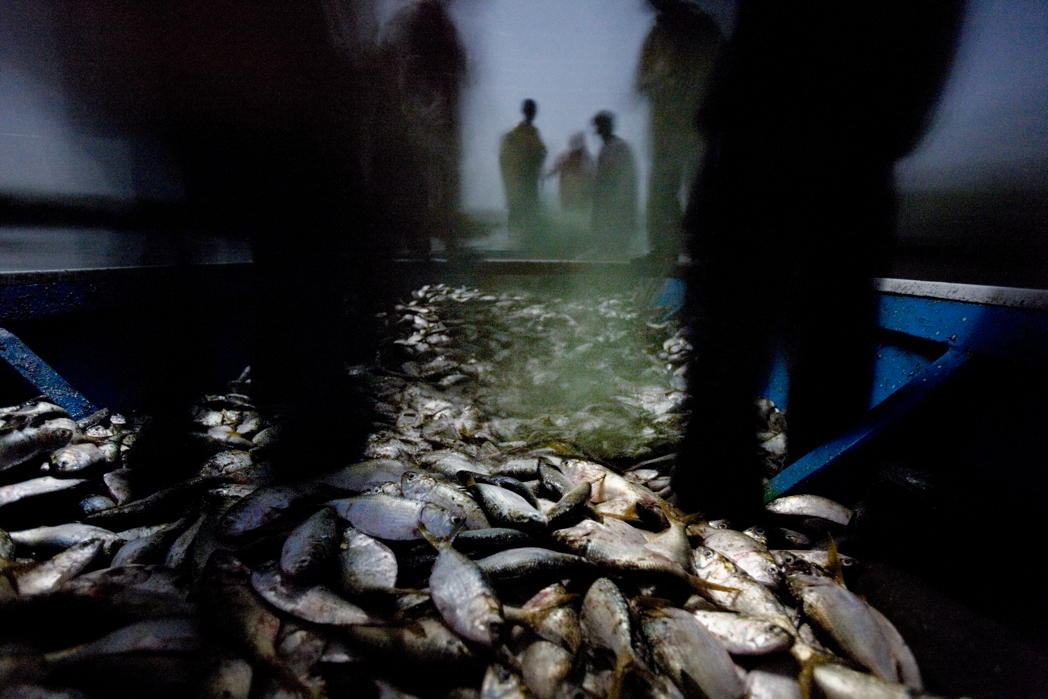How big does a step have to be so one can consider it an improvement in animal welfare, and how small can it be and still be considered as such? It’s an old debate, yet there are moments when it needs to be reignited.
The Catch Welfare Platform [1] is doing excellent work by bringing together people from industry, science, and animal welfare to achieve the goal of fish welfare (i.e. reducing animal suffering) in all types of fisheries. For its third conference on 19 and 10 November 2025, it called for an idea challenge. Two project ideas were presented: (1) short catch time and immediate stunning and killing in artisanal fisheries, and (2) a tool for binding crabs‘ claws on board to avoid declawing live crabs after catch. The majority of conference participants voted for the second project, which sheds light on the current understanding of the demand for fish welfare.
Reducing the duration and extent of suffering
The first project idea, ‘More fairness in fishing’ [2], which I presented myself, is based on a project with artisanal fishermen in Senegal that I was able to carry out for fair-fish 20 years ago [3] and which was successful until the market partner at the time gave it up. The project idea is to use the experience gained in Senegal as a basis for launching local pilot projects with artisanal fishermen in the Global South and in Europe in order to prove that it is not only possible to significantly reduce animal suffering, but also to achieve higher incomes and better market access for fishermen. For more, see the video (3′ 45″).
The second project idea, developed by a fisherman, aims to eliminate the still usual practice of declawing crabs after they are caught, in order to prevent injuries among the catch. To help fishermen to no longer dismember the crabs, he has invented a system for bind the claws on the boat, so that the crabs can be kept alive in better condition[4]. One participant asked what benefit this would have for animal welfare.
It’s about living beings, not commodities
When conference participants were asked to decide which project to award, my idea received some votes, but the clawbinder idea received quite some more votes. Since I was not present in person, but only online, I can only guess why the majority preferred the clawbinder, perhaps due to various aspects such as: developed from within the industry, easier manageable, lower budget, personal presence, etc.
However, the decision also seems to reflect a general understanding of the term ‘fish welfare’ in industry, science, and the animal welfare movement, which often translates into improvements in individual aspects that do not change the suffering as such. In this example, it is certainly progress to spare a crab the pain of having its claws lopped of and continue its life as a cripple, but having to vegetate for days and weeks without being able to use its claws is a far cry from well-being, isn’t it? Imagine being locked up in a cell with other people for an indefinite period of time and being put in straitjackets to prevent fighting among yourselves, which is supposedly a humane alternative to chopping off your arms…
Step by step — but to which ultimate goal?
Many of the ‘welfare‘ solutions proposed in recent years in fisheries (and aquaculture) are similar: they improve an isolated problem, but not so much for the animals concerned. Such improvements can, of course, be seen as small steps in the right direction. I admit that I am sceptical about this approach, as it can lead to complacency, as if a significant improvement had already been achieved, while from the fish’s point of view, not much has changed.
In many cases, however, changes can only be made step by step. The question is whether a step we want to take is leading in the right direction. To know this for sure, we first need to have a clear idea of the ultimate goal. Do we want to reduce stress, pain, fear, and injuries in fishing as much as ever possible? If so, we should avoid investing time and money in dead-end solutions such as a clawbinder or, to put it more generally, in improving fishing practices that cannot in themselves lead to the ultimate goal.
I do not wish to discourage all these initiatives, but rather to view them from a more holistic perspective, bearing in mind that these are living beings and not commodities.
Title picture by Michael Hauri
References:
[1] https://catchwelfareplatform.com/
[2] ‚More fairness in fishing‚ (video 3‘ 45″)
[3] Experiences in improving fish welfare in artisanal fisheries
[4] will be available on [1]


Schreibe einen Kommentar
Du musst angemeldet sein, um einen Kommentar abzugeben.